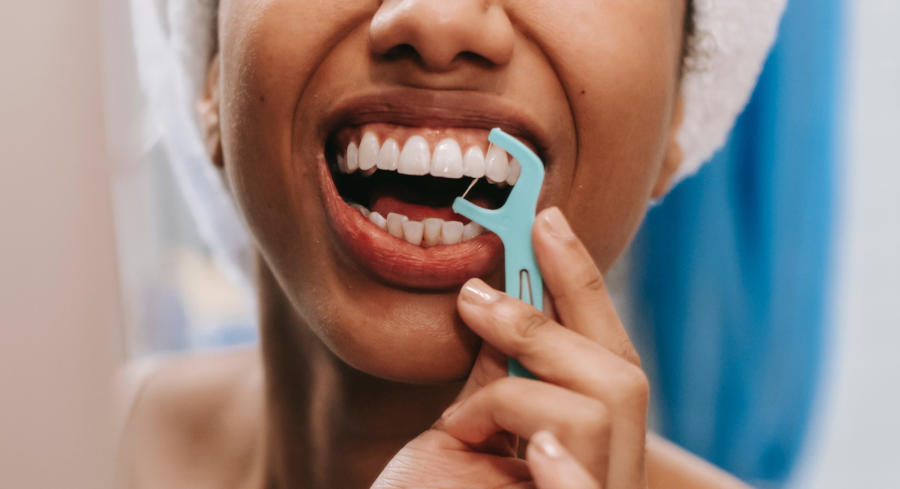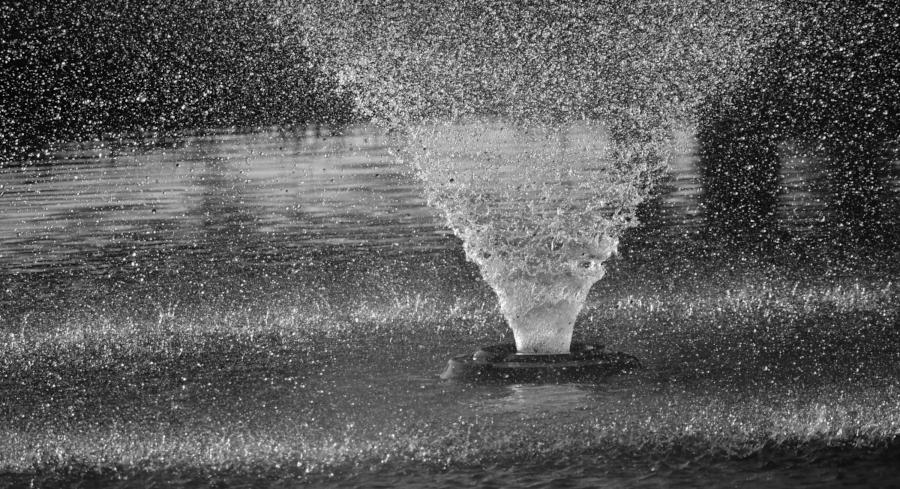

Do you prefer traditional string flossing or a water flosser to keep your teeth and gums healthy? To make an informed decision, it's important to understand the differences between the two types of flossing. Find out how water flossers and string-flossers stack up against each other in this article.
Is a WaterPik water flosser better than regular flossing? In short, no, but it depends. While researchers debate which method is statistically superior, most orthodontists and dental professionals continue to advise their patients to floss. Quite simply, floss is very effective, very affordable, and tried and true.
Unfortunately, many people still refuse to floss. Studies estimate that only roughly 30 percent of Americans floss daily and slightly over 32 percent of Americans say they never floss! Dental floss only works if it is used properly and consistently, which is why water flossing is often suggested as an alternative to try to give another option that people may end up using more consistently than floss. After all, flossing of any kind is better than no flossing at all!
Many patients have asked Dr. Skarin about his thoughts on using a WaterPik. WaterPiks or devices that use water to floss teeth, have been around for a while, but they have seemingly grown in popularity recently. We hope this page will give you the information needed to make the best decision on whether or not a WaterPik is right for you or if using tried and true dental floss gets the job done.
If you are in the no-flossing crowd, pick regular floss or a water flosser and add it to your routine ASAP. Both methods are good at removing plaque and using either method will be greatly beneficial to your oral health. If on the other hand you are a long time flosser and are looking for more in-depth information on the advantages and disadvantages of flossing and water flossers, read on below!
The purpose of flossing is to remove food particles that get stuck between teeth. These food particles attract colonies of bacteria that must be brushed away and removed in order to stop plaque from developing on the teeth. If plaque is not removed by brushing and flossing, the plaque hardens into tartar/calculus, which slowly but surely causes gum inflammation. Inflammation can then lead to bone loss, which leads to tooth decay and severe dental issues down the road.

The most important point to keep in mind is that bone loss and poor oral health can and will happen if teeth are not properly cleaned and flossed. Flossing between your teeth is a necessary and crucial part of oral health. First, it helps remove plaque from between your teeth. Second, it prevents gum disease. Third, it reduces bad breath. Fourth, it keeps your gums healthy. And finally, it makes your smile look better.
Flossing is one of those things we know we should be doing, but never seem to get around to. We brush our teeth every day, but flossing seems like a chore. Unfortunately, if you wish to keep your teeth for many years to come well into old age, flossing is not optional. It is that important.
Dental floss and makeshift tooth picks have been around for a long time. In fact, anthropologists have found evidence of previous humans using pointed sticks, horse hair, and other implements to remove particles from hard to reach areas around the teeth. The longer history of dental floss is quite interesting.
Dental floss was officially invented in 1815 by a dentist that introduced the invention of a thin piece of waxed silk thread that helped his patients clean between their teeth. As the use of floss began to catch on, Codman and Shurtleft Company began marketing and producing an unwaxed silk dental floss followed by Johnson and Johnson producing their own version of floss in 1896.
From 1896 to today, floss has been produced in various types of newer materials and textures. Some of these materials make it easier to floss between teeth with tight spaces while other flosses have a more spongy or porous texture which makes it easier to remove particles from the teeth. Learn more about the different types of dental floss.
There are two main methods of flossing, waterpik and traditional floss. Waterpik is a small device that uses pressurized water to clean between teeth. Traditional flossing involves using a string made out of natural or artificial fibers to clean between teeth. There are many innovative options of flossing aids that incorporate the floss into a easier-to-use disposable device such as the Platypus or the Glide Flosspick, but may not be appropriate to use with fixed braces as they can inadvertently knock brackets off the teeth and require repair.

Both options are effective at cleaning between teeth, but most dentists, orthodontists, and dental professionals continue to advise patients that if they can only do one or the other, floss is still preferred over a water flosser. A third option was recently developed by Philips/Sonicare called an air flosser, a device that squirts a burst of air between the contacts of adjacent teeth, but would be considered the least effective of the options.
Waterpik is a handheld device that uses pressurized water to clean between your teeth. It works much like a toothbrush, except it does not need to be held in place while brushing. Instead, you insert a nozzle into your mouth and let water flow through your teeth. It works by blasting tiny pulsating jets of water against the surface of the teeth, which helps remove food particles and bacteria. Learn more about water flossers and how they work.

Waterpik is a newer option than traditional flossing. It was invented by Dr. Gerald Moyer in 1962 in Ft. Collins, CO. His solution was to use a small device that would allow them to easily reach back molars with a stream of pressurized water. The Waterpik was originally known as an oral irrigator, but it was not until recently that it became more popular as an easier-to-use substitute for flossing.
If you only have time for either a water flosser or regular dental floss, we always suggest going with regular dental floss. Water flossers are not automatically superior in effectiveness. Dental floss gives an amount of control that is effective in getting rid of plaque and floss is also less likely to be used improperly.
On the other hand, it is important to note that since waterflossers use pressurized water, there is a risk to patients if used improperly. While water flossers are not as high powered as a pressure washer, the mechanics are still the same. If used improperly, water flossers can do damage to the gums. It is also important to note that water flossers do make a muffled mechanical sound and does take up a bit of countertop space, if space is at a premium.
Dr. Skarin suggests to his patients that if you are a regular flosser that is looking to add benefits on top of your regular dental routine, adding a water flosser on top of regular daily flossing gives the best of both worlds.
4 N Washington St.
Naperville, IL 60540
630-369-0045
803 N Bridge St.
Yorkville, IL 60560
630-553-5227